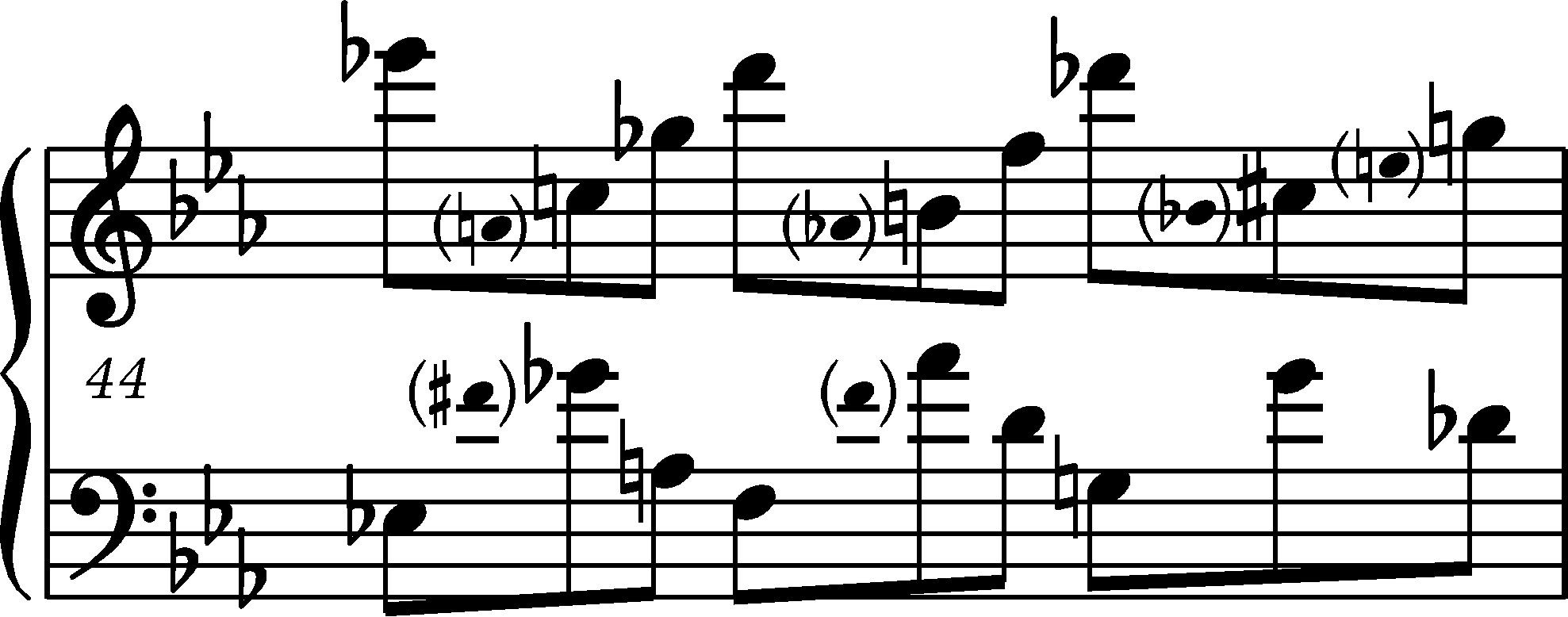



Issues : Corrections in A
|
b. 1-8
|
composition: Op. 28 No. 19, Prelude in E♭ major
..
In A one can see crossed-out three-quaver slurs running from the 2nd quaver of each triplet to the 1st quaver of the next one. One can assume that the crossing-out was related to the legato indication added at the beginning of the Prelude. At the beginning of the Etude in A category imprint: Corrections & alterations; Source & stylistic information issues: Corrections in A , Deletions in A |
|
|
b. 18-20
|
composition: Op. 28 No. 19, Prelude in E♭ major
..
In b. 18 and 20 Chopin changed in A the last L.H. note from g category imprint: Corrections & alterations; Source & stylistic information issues: Corrections in A , Deletions in A , Accompaniment changes |
|
|
b. 19
|
composition: Op. 28 No. 19, Prelude in E♭ major
..
The crossings-out visible in A show that Chopin initially wrote in this bar 3 pedals, one for each triplet. category imprint: Corrections & alterations; Source & stylistic information issues: Corrections in A , Deletions in A |
|
|
b. 26-28
|
composition: Op. 28 No. 19, Prelude in E♭ major
..
As was the case in b. 18 and 20, Chopin changed in A the last L.H. note from g category imprint: Corrections & alterations; Source & stylistic information issues: Corrections in A , Deletions in A , Accompaniment changes |
|
|
b. 43-44
|
composition: Op. 28 No. 19, Prelude in E♭ major
..
These bars underwent numerous corrections in A. In b. 43 Chopin changed single notes – he moved the 2nd and 5th R.H. quavers a minor third higher (c2→e category imprint: Corrections & alterations; Source & stylistic information issues: Corrections in A , Deletions in A , Accompaniment changes |

 Major
Major